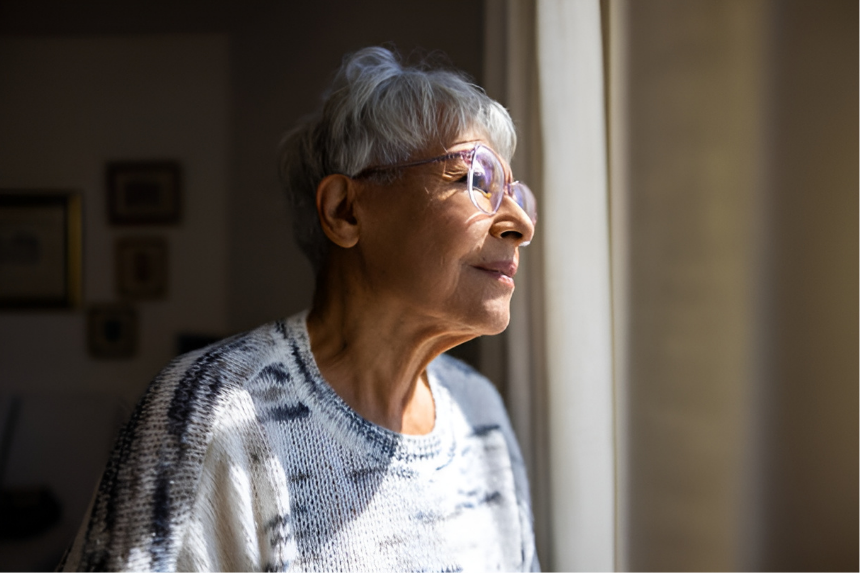
Approximately 1 in 10 older adults (adults who are at least 65 years old) are diagnosed with depression, and 1 in 3 older adults consider themselves to be socially isolated. These two issues are associated with impaired cognitive functions and earlier death. However, these alarming statistics are likely to be underreported due to the stigma older adults associate with mental health issues. The stigma behind seeking help can even be extended to daily living; many older adults also feel reluctant to accept at-home care or transition into assisted living care. To encourage older adults to seek help, we must first identify the reasons why seeking help is stigmatized, particularly within this vulnerable population.
Ageism
Ageism, according to the Oxford Dictionary, is defined as “prejudice or discrimination on the grounds of a person’s age.” It can be as obvious as refusing to hire an older adult because of their age, or it can be as subtle and normative as beauty products designed to minimize the appearance of wrinkles and loose skin. Sadly, over 9 in 10 adults over 50 years old report experiencing ageism in their daily lives, which is also associated with chronic health conditions and severe depressive symptoms. Not only does ageism hurt emotionally; it takes a physical toll as well.
Ageism has created several harmful stereotypes against older adults. It has falsely equated aging with a total loss of independence, decreased cognitive functions and increased frailty. In reality, most older adults retain good health and cognitive functioning. Yet, these stereotypes remain ingrained in today’s society. As a result, older adults may fail to seek help if they believe these stereotypes to be true, which can then lead them to believe that because they are old, they are a burden. Thus, older adults may suffer in silence, believing that it is their own responsibility to deal with these normalized issues. The stigma of seeking help is rooted in the fear of being perceived as a burden to those around them.
Generational Beliefs
The older adult population can be categorized into three generations: Baby Boomers, the Silent Generation, and the Greatest Generation. Each generation has distinct characteristics that may make it difficult to ask for help. According to Johns Hopkins University, baby boomers, which includes people born between 1946 and 1964, are characterized as “work-centric.” Baby boomers are less likely to quit working, even when they may have already reached retirement age. These adults may feel hesitant to seek help with daily living, as it may interfere with their work. Similarly, the Silent Generation, which includes people born between 1928 and 1945, is known for valuing independence, and seeking help with loneliness may be a struggle for them. Lastly, those who were born between 1901 and 1927 are part of the Greatest Generation, and these people lived through multiple wars, which may have negatively impacted their mental health. For some of these adults, they may have learned to live with depression and PTSD, which are often associated with war, and have not received adequate treatment for it. Therefore, specific generational beliefs are important to consider, as elderly adults are not a monolithic group.
The Costs of Seeking Help
Seeking help may not only be stigmatized, but it may also be feared due to its costs. Elderly people who live in poverty already struggle with getting medication and enough food to eat. One study also found that elderly adults who are also of low socioeconomic status (SES) often harbor deep distrust for healthcare providers, as they believe that the system has failed them. For these people, it is already difficult to get help with their daily life even with government and community assistance. Furthermore, it may be almost impossible for them to plan and access long-term help. With these individuals, the stigma of seeking help originates from poverty.
Reducing Stigma and Ways to Help
Reducing stigma is a complicated process and may take generations with something as rampant as ageism. However, we can start by challenging ageist remarks, educating others on how aging can be a graceful process, and ensuring older adults that they do not have to struggle alone.
We can also direct the elderly to meal delivery programs, such as Meals on Wheels and government assistance programs, if needed. We can help them find cost-effective home care and volunteer programs, such as Conversations to Remember, that can help with socialization. Although we cannot fully alleviate poverty, we can help make their lives more manageable and comfortable.
Even though it may take years of structural and cultural changes, we can do our part in helping older adults find the courage to seek help.
Sources:
- Biological factors influencing depression in later life: role of aging processes and treatment implications | Nature
- Mental health treatment seeking among older adults with depression: the impact of stigma and race | American Journal of Geriatric Psychiatry
- Social Isolation and Loneliness in Older Adults | JAMA
- Why Some Older Adults Are Reluctant to Ask for Help | Northwestern Medicine HealthBeat
- A Social Psychological Perspective on the Stigmatization of Older Adults | NIH
- Help-seeking experiences of older adults with a diagnosis of moderate depression | International Journal of Mental Health Nursing
- Experiences of Everyday Ageism and the Health of Older US Adults | JAMA
- Ageism is one of the last socially acceptable prejudices. Psychologists are working to change that | American Psychological Association
- The Changing Generational Values | Imagine JHU
- Perspectives on Aging and End of Life Among Lower Socioeconomic Status (SES) Older Adults | Southern Gerontological Society
